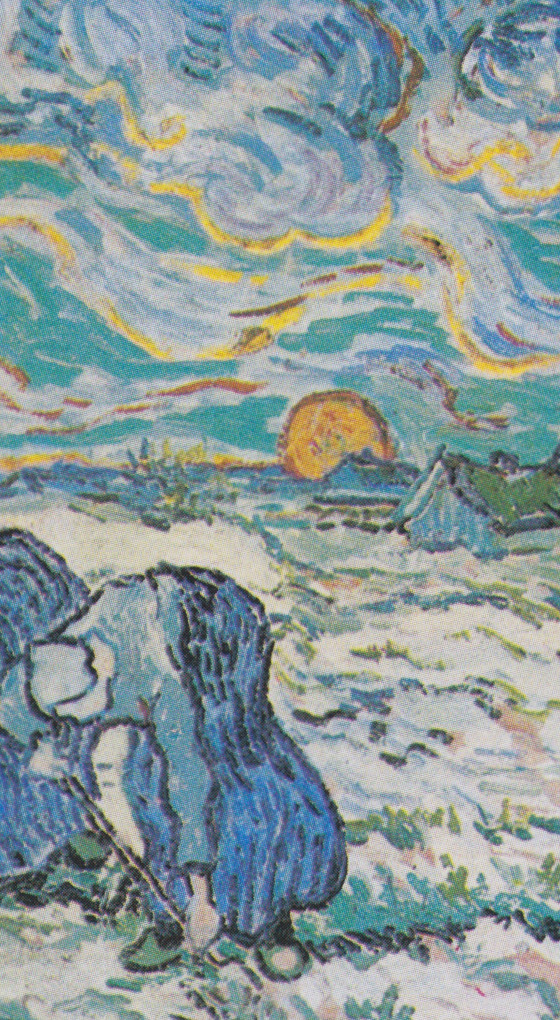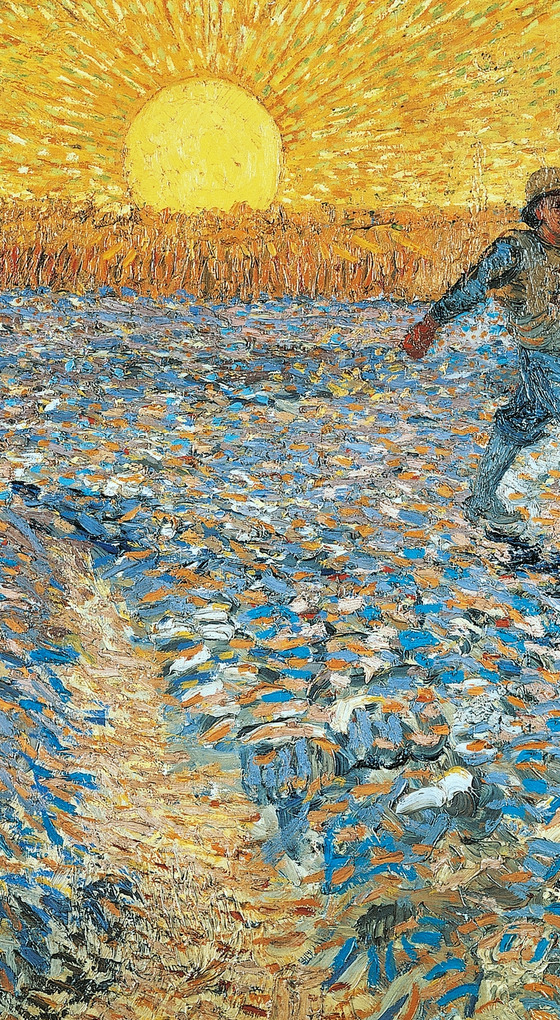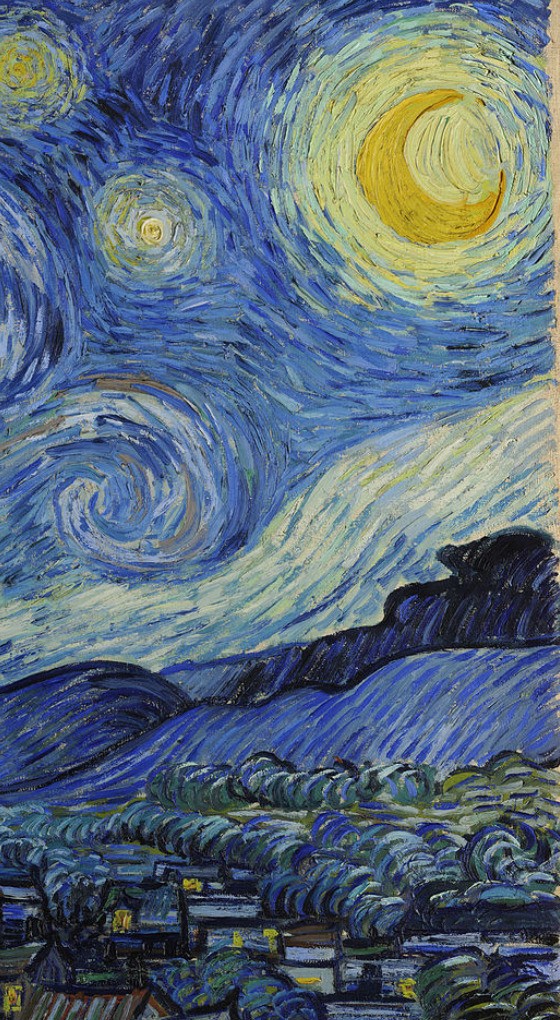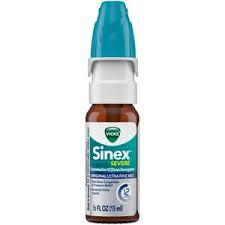reubenlockfield-blog
6 posts
Don't wanna be here? Send us removal request.
Photo
It’s actually pretty scary how underappreciated and unwanted introverts can appear to be sometimes (at least in the U.S.). I read an interesting book called Quiet by Susan Cain in which she talks about how in school and in companies extroverts are valued and accepted far more than introverts. Just think about it - classrooms are becoming much more group and participation oriented and companies want people who appear to be very out going and energizing. Introverts like me have to pretend to be extroverts in social and work situations in order to feel more accepted and valued. It will be interesting to see what continues to happen with this in the future.

Adoption is happening
531 notes
·
View notes
Photo
The life of van Gogh is a reminder that sometimes we never truly know how our actions will affect the world. Even though he had many hardships in life, Vincent van Gogh has been able to impact the lives of many people for generations. His life is also a reminder that our greatest trials can lead us to create and embody the beautiful parts of life. Oddly enough, van Gogh’s life story reminds me of the poem “The Rose That Grew from Concrete” by Tupac Shakur because although both Tupac and van Gogh experienced adversity, they were both able to improve the world in their own ways.



Vincent van Gogh
Born Vincent Willem van Gogh on March 30, 1853, in the Southern Netherlands, Vincent was the oldest surviving child of Theodorus van Gogh, a minister, and Anna Cornelia Carbentus. He described his childhood as “gloomy and cold and sterile,” having to reluctantly leave for boarding school in 1864. Vincent attended many different schools, but while attending Willem II College he was taught to draw by a successful French artist, where his love to art grew from an early age. Vincent became employed, when he was 16, by the Hague Gallery, with the help of his uncle. During this time he traveled from London to Paris, immersed in the business of art dealing. He fell in love with the daughter of his landlady, this love was unfortunately unrequited. Even though he described this as the happiest time of his life, he quickly became disillusioned by the thought of becoming a professional art dealer and instead focused on a religious career like his father. Following this he began a ministry with miners, which helped him to become more informed to the lives of the working class. This is seen in much of his works, which often depict peasant life. After this, only Vincent’s brother, Theo van Gogh (1857-1891), supported and encouraged Vincent to become an artist.
It was not until the age of 27 that Vincent began pursuing his interest in art. He doubted himself, and this doubt was shared with everyone but his brother. Vincent experimented with all sorts of techniques, styles, and subject matter. By this time, Vincent had moved from his parent’s home and was involved with a prostitute, named Sien Hoomik. She became his model for many pieces. However, this relationship was frowned upon, especially due to Hoomik’s previous pregnancy resulting in her son born out of wedlock, and the stress of this caused them to separate.
Vincent became friends with many now well-known artists, many of whom greatly influenced his own work. These artists included Jean-Francois Millet (1814-1875), Paul Gauguin (1848-1903), and Camille Pissarro (1830-1903). Vincent’s own work gradually became much more vibrant after he enrolled in an academy in Antwerp, adopting a more colourful palette and discovering styles of Japanese artwork.
While living with Gauguin, Vincent painted his famous sunflowers. Also during this time, his depression, epilepsy, psychotic attacks, and delusions began to worsen. Because of this he threatened Gauguin with a knife and cut off part of his ear as a gift for a prostitute. He was temporarily hospitalized in Saint-Rémy-de-Provence, creating his masterpiece The Starry Night. His depression worsened however, and in 1890 it is believed that Vincent attempted suicide by shooting himself in the chest. He died two days later. Vincent viewed himself as a failure, however Theo’s widow dedicated her time to getting Vincent the recognition he deserved.
Above: Two digging peasant-women digging on a snow-covered field, 1890 - The Sower, 1888 - The Starry Night, 1889, by Vincent van Gogh (1853-1890)
1K notes
·
View notes
Link
I find the data pertaining to the studies linking pessimism with increased health problems very interesting. The mind is a very powerful tool, but it’s hard for me to wrap my head around the idea that a person’s outlook on life can so deeply affect their physical health. Nevertheless, studies like the ones mentioned in this article definitely show that having being optimistic benefits our lives in a multiplicity of ways. However, I believe it’s important to make sure a positive outlook doesn’t turn into a delusional, illogical state of mind, one in which someone believes everything will go their way and work out for them. An interesting read is the book The Hope Circuit by positive psychologist Martin Seligman. In the book, one of the topics Seligman discusses is the benefits of optimism and the drawbacks of pessimism. It’s definitely work checking out.
Optimism is associated with greater physical and mental health, and one reason why could be linked to its role in promoting better sleep. In a study of 3,548 people, those who were the most optimistic enjoyed higher quality sleep, hinting at the importance of a positive outlook in getting a good night’s rest.1
While the reason why optimism leads to better sleep wasn’t revealed by this study, the researchers, from the University of Illinois, suggested it could be due to buffering the effects of stress, leading to better coping mechanisms. In other words, optimists may spend less time lying in bed with their mind racing, allowing them to drift off easier.
“Optimists are more likely to engage in active problem-focused coping and to interpret stressful events in more positive ways, reducing worry and ruminative thoughts when they’re falling asleep and throughout their sleep cycle,” study author Rosalba Hernandez said in a news release.2
Optimists sleep better
The study began by measuring participants’ level of optimism using a 10-item survey, which included statements such as “I’m always optimistic about my future” and “I hardly expect things to go my way.” Participants then rated how much they agreed with the statements, using a five-point scale.
The participants’ sleep quality and duration was also tracked, using self-reported data, including the number of hours slept at night, difficulty falling asleep and symptoms of insomnia (a subset of participants wore activity monitors to track sleep data).
Optimism was significantly associated with better sleep, with each standard deviation increase in optimism score linked to a 78% increased likelihood of reporting very good sleep quality.3
Those with greater optimism scores were also 74% more likely to have no symptoms of insomnia, had less daytime sleepiness and were more likely to get adequate sleep — sleeping for six to nine hours a night. Hernandez explained in a news release:4
“The lack of healthy sleep is a public health concern, as poor sleep quality is associated with multiple health problems, including higher risks of obesity, hypertension and all-cause mortality. Dispositional optimism — the belief that positive things will occur in the future — has emerged as a psychological asset of particular salience for disease-free survival and superior health.”
Positive personality characteristics linked to better sleep
A number of previous studies have also linked positive personality characteristics, including optimism and self-esteem, with better sleep. In one study of 1,805 adults, ranging in age from 30 to 84 years, those with insomnia symptoms scored lower on measures of optimism and self-esteem.5
Further, those with lower optimism and self-esteem were more likely to sleep for six hours or less each night (defined as short sleep duration) or for more than nine hours each night (long sleep duration).
The relationship between positive personality characteristics and sufficient sleep occurred even after the association between poor sleep and depression was accounted for. Results were similar in a study involving children, which found healthy sleep duration was linked to optimism. The researchers explained:6
“The relation resembled a reverse J-shaped curve, such that children whose sleep duration was in the middle of the distribution scored higher on optimism compared to children who slept relatively little. Further, children with shorter sleep latency scored higher on optimism and tended to have higher scores on self-esteem.”
Another study on college students looked at the relationship of sleep, optimism and mood, revealing “complex relationships” among them. People who tended to be pessimistic also tended to be more anxious and have more symptoms of stress, which had adverse effects on sleep. Poor sleep was, in turn, damaging to optimism, yet, being a morning person seemed to counter some of this damage.
“In conclusion, optimism and sleep quality were both cause and effect of each other. Depressive mood partially explained the effect of sleep quality on optimism, whereas anxiety and stress symptoms were mechanisms bridging optimism to sleep quality,” according to the study.7
Benefits of optimism beyond sleep
The ability to be optimistic, which is defined as the “generalized expectation that good things will happen”8 is protective against cardiovascular disease (CVD),9 such that it reduces the risk of heart attacks and strokes.10 Lead author Julia Boehm noted in a news release that being positive is about more than the absence of negative:11
“The absence of the negative is not the same thing as the presence of the positive. We found that factors such as optimism, life satisfaction, and happiness are associated with reduced risk of CVD regardless of such factors as a person’s age, socioeconomic status, smoking status, or body weight.
For example, the most optimistic individuals had an approximately 50% reduced risk of experiencing an initial cardiovascular event compared to their less optimistic peers.”
Being optimistic is also linked to a longer life span, with increasing levels of optimism associated with lower risk of mortality. In fact, optimism was associated with a lower risk of death from chronic disease, including cancer, heart disease, stroke and respiratory disease, as well as infection.12 Further, optimism is also linked to following health benefits:13
Healthier lipid profile
Lower levels of inflammatory markers
Higher levels of serum antioxidants
Better immune responsiveness
Healthier autonomic function
Higher levels of heart rate variability
Experiencing emotional well-being, positive mood, joy, happiness, vigor, energy and other measures of “positive affect,” along with positive dispositions like life satisfaction, hopefulness, optimism and a sense of humor, is also associated with increased survival in healthy people, including reduced cardiovascular mortality.14
Further, people with diseases, including renal failure and HIV, and positive psychological well-being also had reduced death rates, suggesting once again that happiness may indeed be protective over your physical health.15
You can learn to be more optimistic
It’s thought that a person’s tendency to be optimistic may be partially due to genes (one study suggested optimism is about 25% heritable16), but it’s also possible to become more optimistic. In one example, researchers asked study participants to write about their best possible self for 15 minutes, then use mental imagery of the positive future expectancies for five minutes.
Compared to a control scenario, the positive future thinking manipulation led to a larger increase in positive affect and future expectancies, showing that “imagining a positive future can indeed increase expectancies for a positive future.”17
Another simple optimism intervention is to think of three things you’re looking forward to tomorrow. When you do this regularly, say before bed, it may lead to reduced pessimism and emotional exhaustion.18
Mindfulness is another tool to increase optimism. Practicing “mindfulness” means you’re actively paying attention to the moment you’re in right now. Rather than letting your mind wander, when you’re mindful, you’re living in the moment and letting distracting or negative thoughts pass through your mind without getting caught up in their emotional implications.
One study showed that practicing mindfulness helped workers in high-stress jobs alter their brain activity to be more left-sided (which is associated with positive moods).19 “[M]indfulness meditation produces demonstrable effects on brain and immune function,” the researchers noted. “These findings suggest that meditation may change brain and immune function in positive ways.”20 Tips for being mindful include:21
When you’re walking, tune into how your weight shifts and the sensations in the bottom of your feet. Focus less on where you are headed.
Don’t feel that you need to fill up all your time with doing. Take some time to simply be.
When your mind wanders to thinking, gently bring it back to your breath.
Notice how the mind likes to constantly judge. Don’t take it seriously. It’s not who you are.
Practice listening without making judgments.
Notice where you tend to zone out (i.e., driving, emailing or texting, web surfing, feeding the dog, doing dishes, brushing teeth). Practice bringing more awareness to that activity.
Spend time in nature.
The Emotional Freedom Techniques (EFT), a psychological acupressure technique, is another tool you can use to increase optimism. It’s excellent for working through negative emotions and limiting beliefs that may be stifling your positive outlook on life.
Why sleep issues should be addressed right away
If you’re having trouble sleeping, whether you consider yourself an optimist or not, it’s important to get to the bottom of it sooner rather than later. Lack of sleep is linked to numerous health problems, including depression,22diabetes, obesity23 and heart problems.
Sleep is even connected with subclinical atherosclerosis, the early stages of hardening and narrowing of the arteries. In one study, those who slept for less than six hours a night were 27% more likely to have subclinical atherosclerosis than those who slept for seven or eight hours a night.24,25
If you have trouble achieving this duration, or you wake frequently during the night, it’s time to take steps to improve your sleep. If you’d describe yourself as a pessimist, making a concerted effort to be more optimistic may help, however you should also pay attention to proper sleep hygiene.
Be sure you’re sleeping in complete darkness, as light (even that from a night light or alarm clock) can disrupt your internal clock and your production of melatonin and serotonin, thereby interfering with your sleep.
In the morning, bright, blue light-rich sunlight signals to your body that it’s time to wake up. At night, as the sun sets, darkness should signal to your body that it’s time to sleep. Keep the temperature cool, between 60 and 68 degrees F, and eliminate electromagnetic fields (EMFs). Ideally, shut down the electricity to your bedroom by pulling your circuit breaker before bed and turning off your Wi-Fi at night.
Other practical solutions include going to bed earlier and considering a separate bedroom if your partner is interfering with your sleep. For more tips, my 33 healthy sleep secrets provides a comprehensive list of strategies for a better night’s rest.
1 note
·
View note
Text
Your Unique Addiction Vol. 2 - Lip Balm
For almost six months I used lip balm multiple times a day every day. My lips were dry and needed lip balm right? But when I ran out of lip balm, my lips suddenly returned to a nice normal smoothness after a week. So this got me thinking. Could lip balm be drying out people’s lips so they then have to continue to use it more and more developing a cycle of dependence? Is this why I see so many people who carry around a stick of lip balm wherever they go, constantly applying it to their lips? I decided to do some research and find out what’s going on.
A quick google search revealed a multiplicity of results pertaining to what many deem “lip balm addiction”. There’s even a website called “lipbalmanonymous.com”. I began to dig in, reading quite a few articles referring to this epidemic. It turns out, some lip balm brands contain ingredients that irritate the lips, leading to incessant dryness. This dryness leads users to apply lip balm more and more frequently, which in turn drys out their lips even more applying the ingredient that provides irritation, leading their lips to dry out again. This vicious cycle continues as long as the lip balm user continues to apply the substance to their lips.
So, what can be done to stop your lips from getting chapped without developing a lip balm addiction? Kick your lip-licking habits and drink lots of water, and do research to find a lip balm that doesn’t contain irritating ingredients.
Works Cited:
https://www.epiphanydermatology.com/blog/lip-balm-addiction/
http://www.lipbalmanonymous.com
0 notes
Text
Your Unique Addiction Vol. 1 - Nasal Spray
About one month ago, my friend Simon began to suffer from a bad bout of nasal congestion. The congestion got so uncomfortably terrible that Simon resorted to buying a popular nasal spray called Sinex to relieve him of his congestion. What resorted was a serious nasal dependence and terrible side effects.

From the first time Simon snorted Sinex up his nostrils, deep into his nasal cavity, he was hooked, whether he knew it or not. His congestion was driving him crazy, making it hard for him to focus, and he needed to focus intensely in order for him to perform well at his job. So Simon quickly ripped the Sinex package open and gave in to the temporary relief it brought him. Problem is, nasal sprays don’t fix congestion. The nasal cavity quickly becomes congested again in what is termed “rebound congestion”. In fact, sometimes using the nasal spray makes the congestion swell up even more severely than before. Essentially, nasal sprays like Sinex are designed so that people will quite simply become hooked on them. Whether this is intentionally done by nasal spray manufacturers is up for speculation.
Within days, Simon was snorting nasal congestion every few hours. The excess spray would then travel down his throat into his digestive system. Soon, Simon began to experience stomach pains and moderate diarrhea. His body was purging itself of the toxic spray that he was ingesting over and over and over again. A few weeks into his nasal spray addiction, Simon began to throw up multiple times a day. His body just could not take it any longer. Simon’s head became constantly dizzy, his body weak from the incessant purging in all of it’s forms. Finally, he drove himself to the ER where a doctor gave him an IV and some medicine to calm his troubled, tortured body.
Simon finally took a long, hard look at the back of the Sinex bottle and read the caution statement, warning anyone from consuming copious amounts of the spray. Since this traumatic experience, Simon’s body has quickly recovered and all is well in the nasal cavity.
Works Cited:
https://www.medicalnewstoday.com/articles/312643.php
0 notes
Text
Rejoicing in Ravenous Reading
The branch cracks as I rip it off of the tree. I remove the smaller twigs from the newly separated limb. Then using a sharp rock, I deprive it of the soft, dark bark, sharpening the end to a point. This will be my sword for the day. I enter another universe through my imagination, my backyard becoming a new world to explore. I fight imaginary foes; today it’s a group of crazy giants. I swing my sword around like a great whirlwind, leaping out of the way of enemy blows. Once all the giants are defeated, I retreat back inside my home, grab a book, and become lost in a world unlike my own, a world which will supply my mind with imagination for the next day.
Reading is one of the defining memories of my childhood. I was lucky to have people in my life who understood the importance of reading, and instilled in me a passion for it. As I look back on my growing up years, a few memories stand out that shaped me into the literate person I am today.
From the time I was born, my mom read books to me while I sat on her lap. When I was a young child, my favorite book was Are You My Mother? by P.D. Eastman. My mom used a different voice for each character to bring the story to life.
“Are you my mother?” (Eastman 10). She said in a child-like, crackly voice representing the baby bird.
“How could I be your mother? I am a cow.” (Eastman 10). My mom said, this time in the lethargic, bored voice of a cow.
My mom lived away from home when she was a kid, and had to travel frequently in order to visit her parents. She used books as a way to pass the time on her trips, developing a love for reading in the process. The other person who inspired me to read was my grandpa. When my grandpa was growing up, he often worked by roofing homes with his dad. His father was an alcoholic, and after a long day of working, he would go to the bar. My grandpa stayed in the car and read for hours while he waited for his dad to finish drinking. Due to this, my grandpa read voraciously his whole life. At my grandparents’ home, his book collection spans entire walls. He was even known to go to a Barnes and Noble, pick out a book, then read and finish it all in one sitting. I always looked up to him, in awe of his reading prowess. Another person who encouraged my hobby of reading was my grandma. When I was about eight years old, she gave me a mini leather bound blue “book journal” to keep track of all the books I read. She was always interested in what I was perusing and would read the same books as I did as a way of connecting with me.
When I was growing up, the library was a very special place for me. My mom and I would go there every week. It was a magical nook, full of portals to new worlds and ideas. The building was happily lit, smelled like dusty paper, and was always bustling with activity. I remember the day I got a library card. I held the glossy green and purple plastic card between my little fingers. My heart jolted in excitement when I noticed it had my name on it. I felt like I had just gained access into a very exclusive society. My mom had to put up with me while I slowly stalked the aisles of books, my head tilted to the side so I could read the titles. I would pull one out, look at the cover, and determine if I wanted to bring it home. I would eventually procure about five books for my weekly reading. In order to make sure that I spent time studying each novel, I would set a timer to go off every 20 minutes, reminding me to switch to the next one.
The first book that had a powerful impact on my life was Maniac Magee by Jerry Spinelli. My second grade teacher, Mrs. Jones, read it to us. Mrs. Jones had a serious addiction to Mountain Dew, and consumed copious amounts on a daily basis. She had short brown hair and always wore a severe look on her face. She loved to read stories to us, and did a great job at drawing out emotion when doing so. Maniac Magee showed me that books could really have a deeper level of depth and meaning, that they could be used to speak about the injustices of the world.
One important memory of reading occurred in third grade. My class was having a competition to see who could read the most books in one month. The winner got to attend an ice cream sundae party. My friend, Nate Graham, was also a reader of considerable stature, and we competed head-to-head in the competition.
“You’re going down Scotty. Nobody reads more books than me!” proclaimed Nate.
“We’ll see about THAT Nathaniel. Maybe you should learn to not be so full of yourself. I’m surprised you can fit your head through the door.” I retorted coolly.
Nate gave me a sly smirk and sauntered off.
The book chart that tracked our progress was quickly filled with bright yellow star stickers. The competition was fierce. I would skip play dates with my friends in order to read more books. Nate and I both consumed so many books that our stickers trailed off of the chart onto the wall. The day finally came for one of us to be crowned the champion. However, the teacher decided to award the prize to both of us. Nate and I attended the exclusive ice cream sundae soiree together. Afterwards, we returned to class, with gloating looks on our ice cream smudged faces.
The teacher that impacted my life the most growing up was my 8th grade English professor Ms. Dalton. Her classroom was full of references to popular books. Colorful streamers stretched across the ceiling, and posters with quotes from books hung on the wall. Every day, we began class by writing a journal entry about a certain theme or topic. On one occasion, our journal entry objective was to write a short story. My mind was filled with endless possibilities of what kind of tale I could create. I began to write feverishly, my hand working tirelessly to keep up with my brain. Finally, as my hand was beginning to cramp, I finished the epic drama.
“Would anyone like to share their story with the class?” Ms. Dalton asked pleadingly.
“I will!” I exclaimed in an irregular moment of courage.
I began to read my legendary story about a man named Pistachio Phyllis, a world champion ping pong player, and his crazy adventures. The class broke out in uncontrollable laughter and even I struggled to keep my composure whilst narrating my tale. I remember the proud look that was on Ms. Dalton’s face. She helped me gain confidence in my abilities, and showed me that writing could be fun and didn’t have to be serious all the time. In the 9th grade, I took a creative writing class from her, which helped expand my horizons on the different forms of composition. I learned how words can be used as an emotional tool to encapsulate a feeling or memory.
It is through the influence and passion of my family and teachers that reading became such a big part of my life. The stories, feelings, and words that I consumed shaped me into the person I am today. My childhood was full of imagination and creativity. Now as an adult, reading empowers me, giving me confidence that I can learn about any subject and acquire any skill that I may need in life.
1 note
·
View note